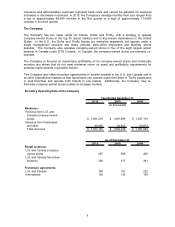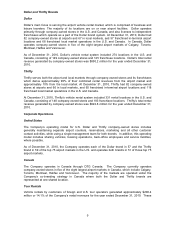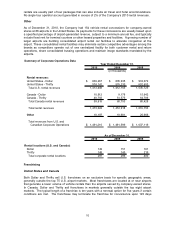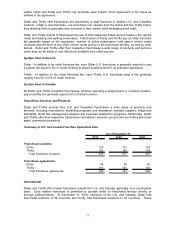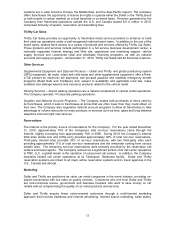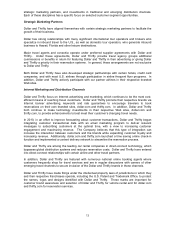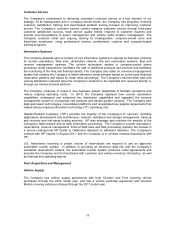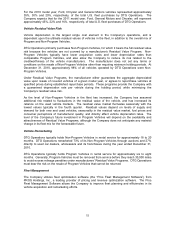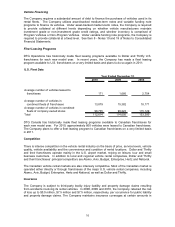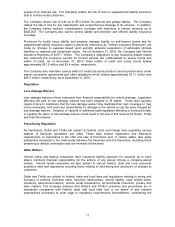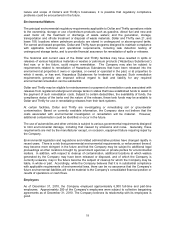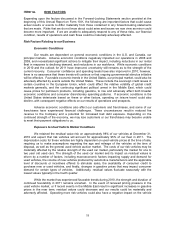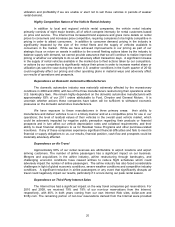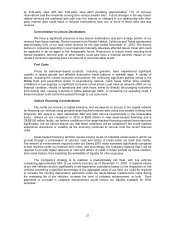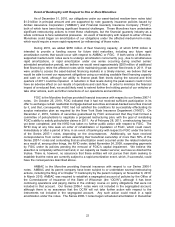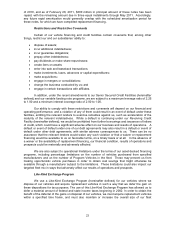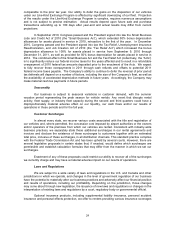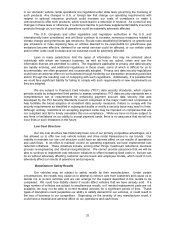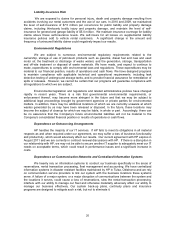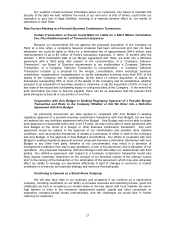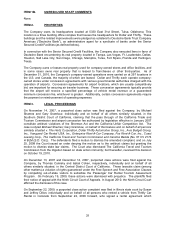Thrifty Car Rental 2010 Annual Report Download - page 19
Download and view the complete annual report
Please find page 19 of the 2010 Thrifty Car Rental annual report below. You can navigate through the pages in the report by either clicking on the pages listed below, or by using the keyword search tool below to find specific information within the annual report.nature and scope of Dollar’s and Thrifty’s businesses, it is possible that regulatory compliance
problems could be encountered in the future.
Environmental Matters
The principal environmental regulatory requirements applicable to Dollar and Thrifty operations relate
to the ownership, storage or use of petroleum products such as gasoline, diesel fuel and new and
used motor oil; the treatment or discharge of waste waters; and the generation, storage,
transportation and off-site treatment or disposal of waste materials. Dollar and Thrifty own 21, and
lease 108, locations where petroleum products are stored in underground or above-ground tanks.
For owned and leased properties, Dollar and Thrifty have programs designed to maintain compliance
with applicable technical and operational requirements, including leak detection testing of
underground storage tanks, and to provide financial assurance for remediation of spills or releases.
The historical and current uses of the Dollar and Thrifty facilities may have resulted in spills or
releases of various hazardous materials or wastes or petroleum products (“Hazardous Substances”)
that now, or in the future, could require remediation. The Company may also be subject to
requirements related to remediation of Hazardous Substances that have been released into the
environment at properties it owns or operates, or owned or operated in the past, or at properties to
which it sends, or has sent, Hazardous Substances for treatment or disposal. Such remediation
requirements generally are imposed without regard to fault and liability for any required
environmental remediation can be substantial.
Dollar and Thrifty may be eligible for reimbursement or payment of remediation costs associated with
releases from registered underground storage tanks in states that have established funds to assist in
the payment of such remediation costs. Subject to certain deductibles, the availability of funds, the
compliance status of the tanks and the nature of the release, these tank funds may be available to
Dollar and Thrifty for use in remediating releases from their tank systems.
At certain facilities, Dollar and Thrifty are investigating or remediating soil or groundwater
contamination. Based on currently available information, the Company does not believe that the
costs associated with environmental investigation or remediation will be material. However,
additional contamination could be identified or occur in the future.
The use of automobiles and other vehicles is subject to various governmental requirements designed
to limit environmental damage, including that caused by emissions and noise. Generally, these
requirements are met by the manufacturer except, on occasion, equipment failure requiring repair by
the Company.
Environmental legislation and regulations and related administrative policies have changed rapidly in
recent years. There is a risk that governmental environmental requirements, or enforcement thereof,
may become more stringent in the future and that the Company may be subject to additional legal
proceedings at other locations brought by government agencies or private parties for environmental
matters. In addition, with respect to cleanup of contamination, additional locations at which wastes
generated by the Company may have been released or disposed, and of which the Company is
currently unaware, may in the future become the subject of cleanup for which the Company may be
liable, in whole or part. Accordingly, while the Company believes that it is in substantial compliance
with applicable requirements of environmental laws, there can be no assurance that the Company’s
future environmental liabilities will not be material to the Company’s consolidated financial position or
results of operations or cash flows.
Employees
As of December 31, 2010, the Company employed approximately 6,000 full-time and part-time
employees. Approximately 200 of the Company’s employees were subject to collective bargaining
agreements as of December 31, 2010. The Company believes its relationship with its employees is
good.
18


